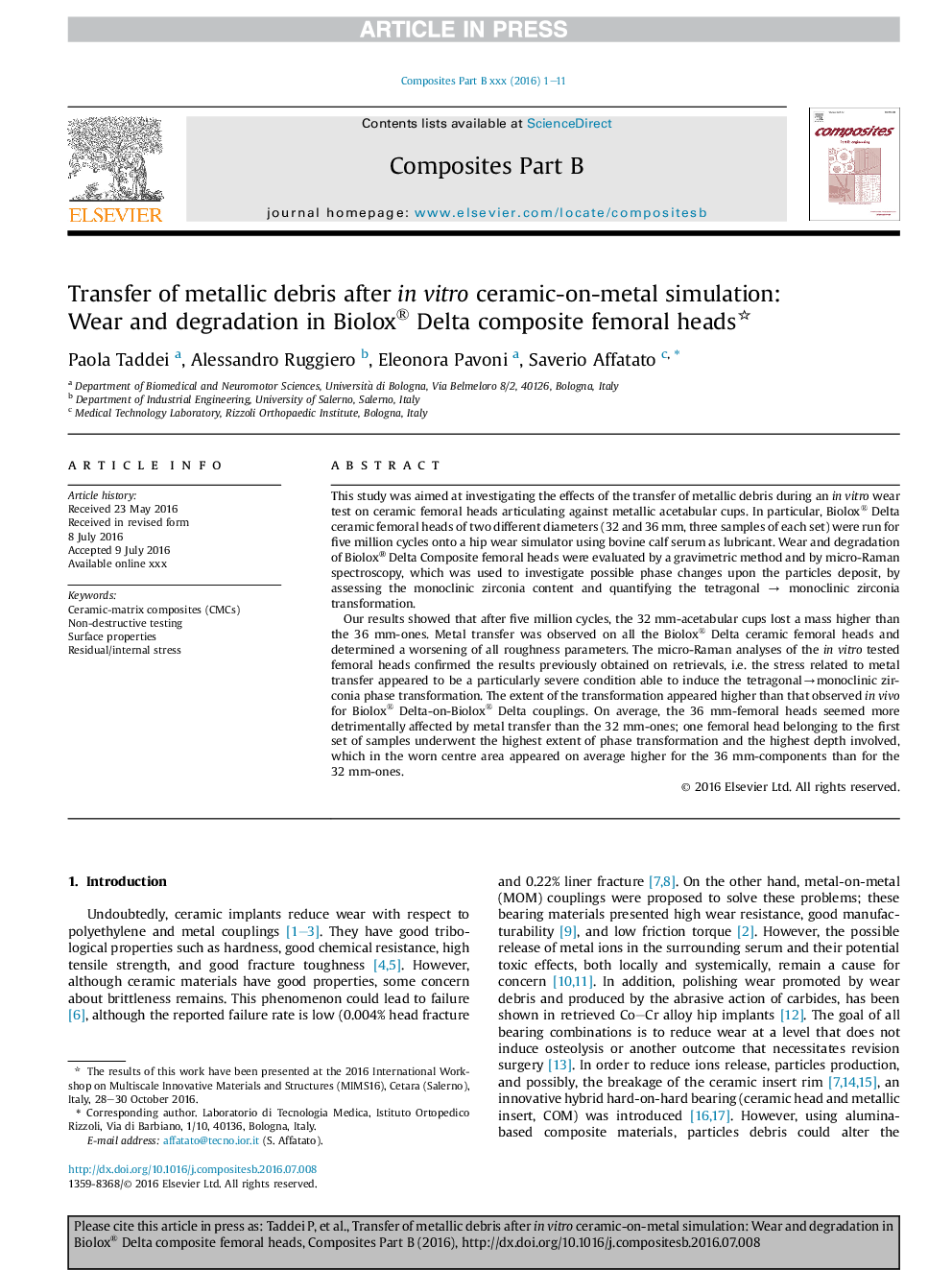| Article ID | Journal | Published Year | Pages | File Type |
|---|---|---|---|---|
| 5021665 | Composites Part B: Engineering | 2017 | 11 Pages |
Abstract
Our results showed that after five million cycles, the 32 mm-acetabular cups lost a mass higher than the 36 mm-ones. Metal transfer was observed on all the Biolox® Delta ceramic femoral heads and determined a worsening of all roughness parameters. The micro-Raman analyses of the in vitro tested femoral heads confirmed the results previously obtained on retrievals, i.e. the stress related to metal transfer appeared to be a particularly severe condition able to induce the tetragonalâmonoclinic zirconia phase transformation. The extent of the transformation appeared higher than that observed in vivo for Biolox® Delta-on-Biolox® Delta couplings. On average, the 36 mm-femoral heads seemed more detrimentally affected by metal transfer than the 32 mm-ones; one femoral head belonging to the first set of samples underwent the highest extent of phase transformation and the highest depth involved, which in the worn centre area appeared on average higher for the 36 mm-components than for the 32 mm-ones.
Keywords
Related Topics
Physical Sciences and Engineering
Engineering
Engineering (General)
Authors
Paola Taddei, Alessandro Ruggiero, Eleonora Pavoni, Saverio Affatato,
